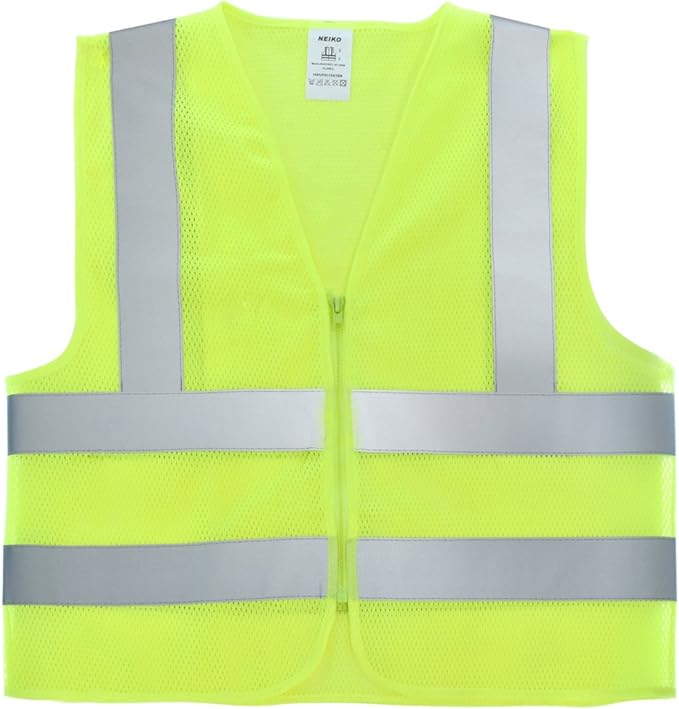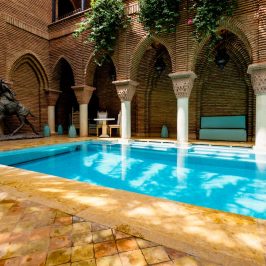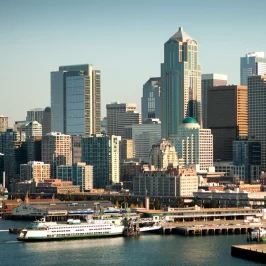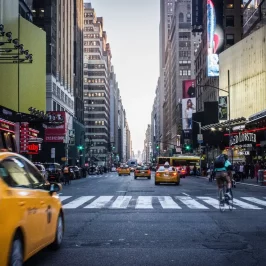The Northern Lights are one of the world’s most amazing natural phenomena. Frequently people make the list of the top 100 things to do and seeing the northern lights must have to be on their bucket list. Before going to see the northern lights it is necessary to make a plan. First, you have to figure out a place where you can have the chance to see them. Norway is one of those countries where you can see supernatural light shows. Here we recommend the best times and places to see the northern lights in Norway.
These eye-catching lights generally appear underneath the auroral oval which usually encircles the Earth between 60° and 70° latitude. The geographical location of Norway makes it an ideal place to see this incredible lighting.
If you never heard about the Northern Lights then worry not. Here we are trying to clarify what they are and why they are something special for you to go to see at any cost once in your life. These lights will hypnotize you and they will make you stay at that time for eternity. Also, they will be the inspiration behind why you should grab the Norwegian Air ticket and fly to Norway.
Before going to Norway we have to realize what the Northern Lights
An aurora known as polar lights, northern lights, or southern lights, is a natural light presentation in the sky in the Arctic and Antarctic areas. These areas are known as the auroral zone. An aurora around the North Pole is called the Northern Lights or ‘aurora Borealis and an aurora around the South Pole is called the Southern Lights or ‘aurora australis.’
The Cree (North Americans) would think of them as the ‘Dance of the Spirits.’ In Finland, they said the lights were brought by Firefox. They thought as the Firefox ran so fast over the snow that his tail made flashes into the sky.
Old Chinese viewers believed that they were the flames of good and evil dragons combating in the heavens. Indeed, even today, these unusual and unpredictable lights are called ‘Aurora,’ according to the Roman goddess of the dawn.
What colors can we see the Auroras in?
Green is the primary color when we think about Auroras. But they are truly found in a lot of different colors also. Light green or Turquoise is the most broadly recognized of these. On the off chance, if you’re blessed, you may even find the opportunity to see Auroras in pink, red, yellow, blue, and even violet hues.
Since arouras are mainly the scattering of light, you may discover them in all the rainbow colors if you’re lucky enough. These lights don’t have a portrayed structure. They may appear as covered or dispersed colors over the sky. Every so often they look like a dispersed cloud over the sky or like a sedge from the sun.
In any case, what causes these astounding lights?
In fact, Auroras start from the sun, which flares up with so much power that it superheats the gasses around it. Modest particles of the sun are shot away from it. It has a pace of over 450 miles or 750 kilometers every second. This wave of particles creates a sun-oriented breeze, and the Earth moves directly in that way.
The sunlight-based breeze can disrupt satellites and be hurtful to space travelers, yet the Earth is secured given its magnetic field. The Earth has a liquid iron center that rotates fast and transforms it into a giant magnet. This field around the Earth is known as the magnetosphere. It also has a north pole and a south pole like a magnet.
The magnetosphere of the Earth draws away from the greater part of the particles from the sun. Some of the particles survive to encircle the climate. These electrically charged particles strike the climate. They energize the oxygen and nitrogen atoms and make them light up in the delightful shades of an aurora.
If you want to see an aurora on Earth, you should stay close to the north or south poles of the Earth. You have to realize that auroras are additionally noticeable from space. From there they can be viewed as rings around the north and south poles.
Auroras, the unstable flashes of light in the night sky have intrigued people for many years. They are a remarkable sign of the connection between the earth and the sun. And they are one of the most wonderful amazement in the sky.
When is the best time to see the northern lights in Norway?
The Northern Lights of Norway is a mystical and outstanding moment. To see this natural phenomenon darkness is a must. The ratio of darkness is perfect for the Northern Lights season in Norway.
Winter is the best time to see the northern lights because it is the darkest time of the year. According to the darkness, the months from October to March are the best season to see the Northern Lights in Norway. And the best time would be between 6 pm to 1 am. The most beautiful northern lights recurrence comes this season in Norway.
If you want to enjoy the Northern Lights perfectly you should avoid the full moon and regions with a lot of light. These environments can make your experience paler.
One thing to keep in mind when flying toward Norway to see the Lights, you are helpless in front of nature. In that case, you should be calm and wait for your good luck. It takes after making guesses up to where your understanding can take you when the Northern Lights start playing.
You ought to have the alternative to see the northern lights before your vacation in Norway closes. So you should check their local weather forecast before accepting the trip. Because cloudy weather will obstruct your purpose of seeing the Lights.
Now you can choose which place you need to see the Northern Lights in Norway. There are various spots, however here we recommend the best places to see the Northern Lights in Norway below.
1. Alta:

Alta is a minor city on Norway’s northern coast, at the head of Alta Fjord in the Finnmark district of Norway. This city is located more than 375 kilometers north of the Arctic Circle. Alta is renowned for its Northern Lights.
Surrounded by arctic tundra and mountains Alta is a city of 20000 people. It is a secluded and protected pine-clad valley at about 70 degrees north. This city is located straightforwardly below the Aurora Borealis oval. Besides that, it contains a stable central atmosphere with clear skies. So, most of the evenings’ aurora shows up here.
Expert Aurora Borealis trackers pass a whole either to the Arctic coast or to significant regions. A huge part of voyagers pass the empty Finnmark plateau in the south using transport. That can increase their chances to peer the lighting glimpse.
Kristian Birkeland (who appears on the Norwegian 2 hundred-kroner banknote) picked Alta for the research on the Northern Lights phenomenon in 1899. As a result, Alta is also called the “Town of the Northern Lights”.
2. Tromso:

Tromsø is ‘the Capital of the Arctic’. It is Northern Norway’s most populated city and social and cultural capital. Tromso is located directly beneath the Northern Lights oval. This characteristic makes it one of the most ideal places on earth for seeing the Northern Lights.
Tromsø comes up with the perfect blend of a vivid city with awesome wild nature and mountains all around. Which makes it a renowned goal for travelers. You can frequently observe the Northern Lights in the city center. However, most people like to leave the center to find some better night darkness.
However, Tromsø has unsteady coastal weather. There are consistently snow and mists hanging over the mountain peaks. As a result, most of the Northern Lights trackers cross further out into the winter evening. Once in a while, they reach the driest spot in Northern Europe, behind the Lyngen Alps.
While on different occasions they go along to the outer coast. Everything depends upon the climate and wind direction. High mountains, fjords, and islands make up a huge number of microclimates. In fact, there is always a spot with clear skies somewhere in this region.
3. Bodø:

Bodø is a county in the Nordland region, Norway. It is a piece of the customary county of Salten.
Bodø isn’t exactly as far north as Tromsø but the city is still arranged over the Arctic Circle. That means you can see the Northern Lights here if you want to visit in the winter. You can also observe the midnight sun if you visit Bodo in the summer.
A belt of light that is based on the geomagnetic shafts situated underneath the Auroral Oval in Bodo. So definitely you will have the opportunity to see the brilliant, glimmering Northern Lights here.
We suggest you travel out of the city center to Mount Rønvik to observe the best Northern Lights. Because Mount Rønvik is an effectively open viewpoint and the best spot in Bodø to see the Aurora Borealis.
If you do not want to go out of the downtown area, the dock in the harbor is also a suitable place for experiencing the Northern Lights.
The Northern Lights are comparatively more grounded to be seen in Bodø than in Tromsø because of the steady northern suitability. In any case, it’s not hard to see the Northern Lights in Bodø by any means. Simply try to head somewhere dark in the region, away from the city lights, and trust in a clear sky!
4. Svalbard:

Svalbard is a Norwegian archipelago, one of the world’s northernmost regions. It lies in the Arctic Ocean between Norwegian territory and the North Pole. It’s familiar with its strong, remote landscape of icy mountains. Svalbard is also the homeland of tundra polar bears, Svalbard reindeer, and Arctic foxes.
Svalbard has all the more lively evenings with its Arctic desert atmosphere. Because it has more chances of seeing the Northern Lights than most other places in the Northern Lights belt. So this place attracts people from all over the world to experience Aurora Borealis.
Longyearbyen is a society on Spitsbergen Island, located in Norway’s Svalbard archipelago. Longyearbyen is situated about 900 kilometers north of the Norwegian territory and 1,300 kilometers from the North Pole. It provides remarkable environments for northern light activities.
The aurora borealis may appear around the early afternoon here. In October and February, you can enjoy the blue Arctic light during the day and the northern lights through the nighttime.
Activity providers in Svalbard offer Northern Nights experiences by snowmobile, dog sled, pontoon, or even by travel outfits with snowshoes.
If you want to leave Longyearbyen in comfort, you can take off the town by snowcat. Otherwise, you can enjoy a wild night here. You can admire the Northern Lights together with delicious food and stimulating conversations.
5. Lyngenfjord:

Lyngen is a fjord in Troms province, Norway. It is one of Norway’s most stunning fjords, situated behind the wild and sturdy Lyngen Alps.
The establishment of the Lyngenfjord area is about 82 kilometers long. This region is encompassed by the blue icy mountains, deep ravines, and the pinnacles of the Lyngsalpene mountain range.
The peaks of the Lyngen Alps are about 1,833 meters high. This forms an impregnable barrier to rain clouds and makes the valleys one of the driest places in the country. There are a few places here where the atmosphere is nearly as dry as the desert, and the weather is clear.
Here the night skies are clear and shining. As a result, this is an ideal spot for seeing the Northern Lights dancing above the mountaintops. Beautiful landscapes with a few alternatives for adventure and entertainment make this area a significant goal for travelers and aurora observers.
It’s a paradise for photographers. They can easily capture the Northern Lights, with the outline of the mountains towards the starry sky, the moon, and the Aurora Borealis.
6. Lofoten Islands:

There are several significant things to do in Lofoten. Such as unbelievable angling, natural beauty, Aurora Borealis, and the midnight sun. Besides that, there are some little towns that travelers love to visit. The wild nature of the Lofoten Islands is as beautiful in the winter just as the remainder of the year. Particularly when the northern lights turn out at night.
Lofoten is located just below the auroral oval which is a belt of light that encompasses the geomagnetic tunnels. So this is a great place that gives travelers the best chances of seeing the magical light. Because in this place the sparkling Aurora Borealis in the sky is reflected in the sea.
If the northern lights are your fundamental motivation behind traveling to Lofoten then you have to remember one important thing. The thing is that perhaps you would not see the Aurora Borealis for a whole week in perspective on the changeable atmosphere here. So pre-adjust yourself with the intention that the Aurora will be a bonus for your visit here.
Lofoten shorelines are perhaps the best spot for shooting the Northern Lights in Norway and around the world. The breathtaking scenery of Lofoten offers excellent ground for the photo of the Aurora Borealis.
What to pack for seeing the Northern Lights in Norway
Going to Norway is indeed a great experience. It will be very special if you go there to look at the Northern Lights. You have to fight the cold here. To encounter the cold here are a couple of things you should pack:
We suggest bringing warm garments like thermal winter suits and reflector vests, warm boots, winter hats, scarves, and mittens for use during the safari. It would be better if the garments were in brilliant hues because brighter colors look better in photos. Additionally, you need a professional camera and tripods to take the best pictures of the Northern Lights in Norway.
This post includes affiliate links, and you will help me to make a commission if you purchase through such links at no extra cost to you. As always, I only recommend products and services I trust, and I am thankful for all of you guys supporting me.
Conclusion
In conclusion, auroras are a beautiful phenomenon of nature and we should feel lucky to witness them. Now that you know what is all about Northern Lights. So we immensely advise that you add them to your bucket list. Visit Norway to see this supernatural phenomenon and you might find the inspiration that you have been searching for.
Like this article? Share it with your travel buddies and pin it if you are on Pinterest.


Are you looking for more practical information about Norway? Make sure to check these posts as well:
- Discover Norway
- Explore Norway’s Magic: Top Things to Do in the Land of the Midnight Sun
- Nordic Comfort: Exploring the Best Hotels and Accommodations in Norway
















